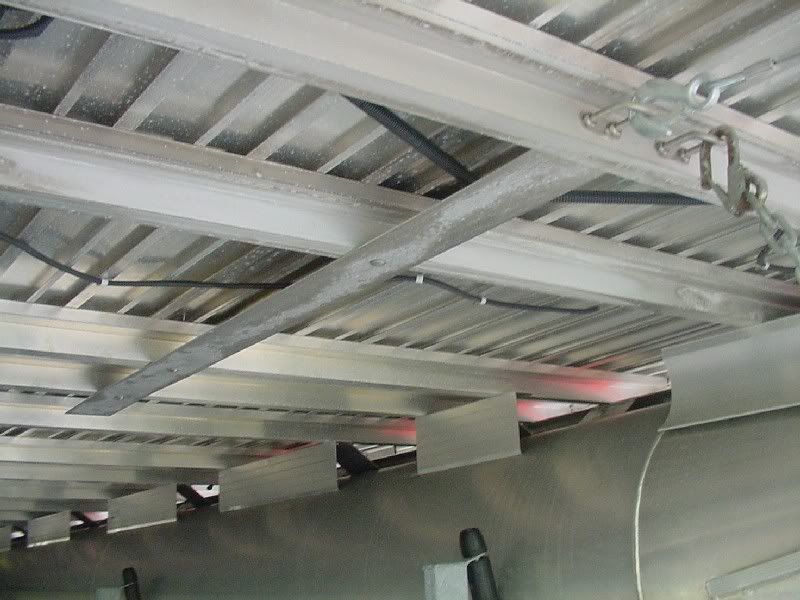GregF wrote:For about $1400 you can do an 8x18' IPE deck.
What do you think? It should last forever with little maintenance from what I read.
Ever work with Ipe? Not trying to rain on your dream at all.
Really heavy to begin with, about twice as heavy as oak and four times as heavy as redwood or cedar. Partially dried Ipe weighs about 6# per board foot. The 8X18 foot deck would weigh almost 900# at 1" thick. Very resistant to rot when the boat sunk. JK It will need oiling periodically to keep the color, otherwise will turn a nice grey. That's OK too but it will get tiny checks in the wood with the grain and a splinter from Ipe isn't fun to have.
I built a Tigerwood deck on the back of the house. Trimmed it with Ipe 4 x 4 posts for the railing and uprights under the roof for support and Ipe stair treads. You will need to pre-drill every screw (stainless). Use carbide tools and sawblades. You will have to also deal with cup, bow and twist in the wood when you are building the deck, the Ipe is VERY stiff and can be frustrating to work with. Don't think you will just lay it out and screw it down. Not likely to happen that easily.
When you cut the wood or run it through a planer, the wood is yellowish. Turns dark brown with sun exposure and then grey with oxidation.
It would look great when oiled but with Florida sun exposure and water exposure I would think you would need to oil it every six months. It is too dense to take a stain and a build-up finish will peel. It would be a lot of work but could look great. With no maintenance, it will be a grey deck but it will last at least 25-50 years.
I read a thing on the internet a few months ago about a complete boat built from Ipe. It was gorgeous and mega expensive and more mega upkeep.
It would definitely be unique for a pontoon deck. Be sure to post some pictures of the work in progress.
Found this pontoon boat w Ipe deck and furniture:
http://www.ashtonboatworks.com/index.ph ... 1&a=0&at=0
Excerpt from another blog:
The comment is about Brazilian woods for boatbuilding. I have seen talk about ipe (Tabebuia sp.), and questions about whether there are any woods that substitute teak for decks. I am currently finishing a 57-foot schooner, whose lines were inspired by the Glocester fishing schooners. The hull is strip-planked ipe on ipe frames. Ipe is actually one of the best woods around for large craft (it is too heavy for small boats - specific density around 1.3). There are commercial boats still running here in Brazil whose hulls are one hundred years old, made of ipe, and generally neglected, but in perfect shape. Shipworms break their teeth on the stuff (as do less robust power tools), and dry rot can't deal with the oils in the wood. Epoxy glues it very well after it is wiped with acetone. Dalia has been under construction for five years now, and has been afloat for nearly two - and on launch day a crane broke and dropped the 20-ton hull from a height of about three meters, and there was no damage (!). Equally important is the fact that ipe is NOT from primary forest, but from the second-growth semidecidual forests from Central Brazil, known as cerrado. The timber we used was from second-growth barely twenty years old (of course the lengths tend to be shorter, but it doesn't matter for strip-planking). Recalling another comment, it is good for cross-trees - it will not split in half, having one of the tightest grains around. And please don't call it Brazilian walnut or any other misleading trade name - we don't call walnut "American ipe"!
As for decks, Dalia's decks, as well as her spars, hatches, bulwarks and doghouse, are made of freijó (frai-JAW, with a soft J) - a wood that was formerly used to make airplanes. It is light (SD around 0.3), strong, and very flexible, glues very well, and long-lasting even if it is not oiled. It is a bit soft for hulls, though. And it is also second growth. I know for a fact it is superior to plantation teak (we have some of that in Brazil as well, and for all I know it is better than Burmese teak - I'll let you know in twenty years.
